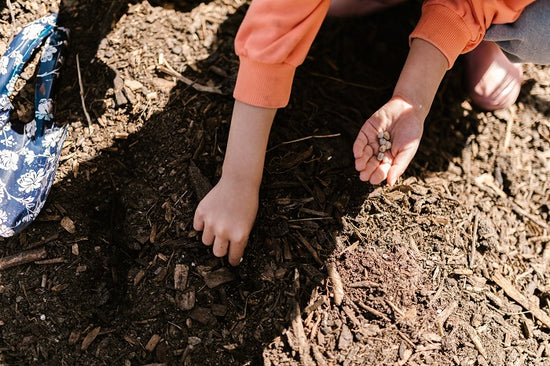Native Farmers
Long before Europeans reached American shores, tribal people were growing some of the same foods we raise today. The Cherokees were the farmers of the southeast, the Iroquois of the Northeast, while the Mandan of North Dakota were the best plains farmers.
The crop grown most extensively was maize - we call it corn. Indigenous people in the Americas were the first to grow maize. They also raised beans, pumpkins and squash. Among the other crops were peanuts, potatoes, sweet potatoes, peppers and tomatoes.
They were food gatherers before they were farmers. They picked the wild berries that grew in the woods; they gathered seeds from wild plants and ground them into flour for bread and they noticed that plants grew from seeds accidentally dropped. Afterwards, they saved the seeds each year and planted them in gardens near their homes.
Experience taught them which plants could be grown in the warm South and which could withstand the colder climates. They learned to cultivate the soil and to fertilize it with natural resources.
Native people from different parts of North America have used a wide range of agricultural techniques, such as the interplanting of corn, beans and squash. Corn provides support for beans. Beans, like other legumes, have bacteria living on their roots that help them absorb nitrogen from the air and convert it to a form that plants can use. (Corn, which requires a lot of nitrogen to grow, benefits most) The large, prickly squash leaves shade the soil, preventing weak growth and deter animal pests.
The American Indians as Farmers
Activity
Grow a virtual and actual garden to determine the factors affecting plant growth
Project Summary
Two groups of factors determine the quality of the vegetable when it is prepared for table use.
Conditions affecting the crop while it is growing as well as, conditions under which the vegetables are kept between harvest and use. Reducing the time from garden to table often means fresher tasting and more nutritious produce
Materials Needed
Spading Forks
Rakes
Measurement tools
Sticks (to mark locations)
Seeds: corn, beans squash
Small barrels or small area to crate mounds
Optional Additional Rescources
Website: Agriculture in the Classroom
Website: First Nations: Farm to School
Additional Project Ideas
Students can make a daily journal describing their observations.
Students can make popcorn as a special treat.
Standards Addressed
To be determined by teacher/state.
Objectives
-
1. Students will have a better understanding of sustainable agriculture and the traditional ways of growing and respecting crops.
-
2. Gain a better understanding of sustainable agriculture as well as understanding the interplanting of corn, beans and squash.
Activity
-
1. Plan and select site
Choose a site that has direct sunshine for most of the day and access to water.
-
2. Prepare the soil
First, break up and rake the soil. Next, build a mound about 12 inches high and between 18 inches and three feet in diameter. Mounds should be three to four feet apart in all directions
-

-
3. Plant Corn
Soak four to seven corn seeds overnight and then plant them about six inches apart in the center of each mound. Many Native people honor the tradition of giving thanks to the "Four Directions" by orienting the corn seeds to the north, south, easth, and west. By doing the same, students cn learn to use compasses and observe the sun's movements.
-
4. Plant beans and squash
After a week or two, when the corn is at least four inches high, soak then plant six pole bean seeds in a circle about six inches away from the corn. At about the same time plant four squash or pumpkin seeds next to the mound, about a foot away from the beans, eventually thinning to one.
-
5. Maintain traditional garden
As corn plants grow, weed gently around them and mound soil around the base of each stem for support. When the corn is kneel-high and again when silks appar on the husks, "side-dress" by putting a high nitrogen fertilizer (such as aged manure or fish emulsion) on the soil surface near each plant.
Verification (steps for student understanding)
-
1. To grow quality vegetables, consider the following; water, light, temperature, nutrients, pH, diseases and insects.
-
2. Identify at least ten details on how Native people used corn.
-
3. Formulate hypothesis of future growth and effectiveness of soil enhancements.
Evaluation
-
Learn what each plant looks like, nutrients they provide, how they taste and understand healthy foods.

